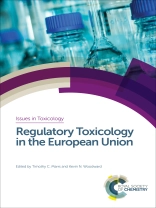Consumer and environmental protection depend on the careful regulation of all classes of chemicals. Toxicology is the key science used to evaluate safety and so underpins regulatory decisions on chemicals. With the growing body of EU legislation involved in chemical regulation, there is a concomitant need to understand the toxicological principles underlying safety assessments
Regulatory Toxicology in the European Union is the first book to cover regulatory toxicology specifically in Europe. It addresses the need for a wider understanding of the principles of regulatory toxicology and their application and presents the relationship between toxicology and legislative processes in regulating chemical commodities across Europe. This title has a broad scope, covering historical and current chemical regulation in Europe, the role of European agencies and institutions, and also the use of toxicology data for important classes of chemicals, including human and veterinary medicines, animal feed and food additives, biocides, pesticides and nanomaterials. This book is therefore extremely pertinent and timely in the toxicology field at present.
This book is an essential reference for regulatory authorities, industrialists, academics, undergraduates and postgraduates working within safety and hazards, toxicology, the biological sciences, and the medicinal and pharmaceutical sciences across the European Union.
Innehållsförteckning
Introduction and General Aspects of Risk Assessment; Regulation of Medicinal Products for Human Use in the European Union; Regulatory Toxicology for Human Medicines in the European Union; Pharmacovigilance for Authorised Human Medicinal Products in the European Union; Veterinary Medicinal Products; Pharmacovigilance for Veterinary Medicinal Products; Animal Feed Additives; Regulatory Toxicology of Pesticides: Concepts; Legal Background and Procedures on Pesticides; REACH; Cosmetic Products; Regulation of Air Quality in the European Union; Occupational Toxicology in the European Union; Food Additives
Om författaren
KNW Animal Health Consulting, UK












